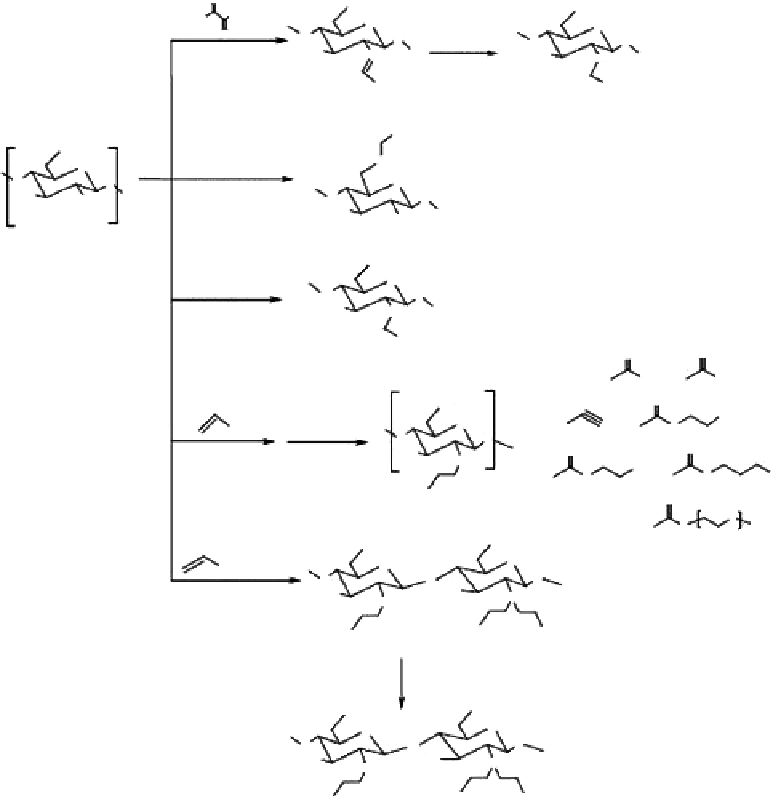Biomedical Engineering Reference
In-Depth Information
O
OH
OH
OH
H
O
O
O
O
O
O
NaOH
2
CN
O
HO
HO
N
1% AcOH
NH
COOH
COOH
Schiff base
N-Carboxymethyl chitosan
COOH
CH
O
O
40% NaOH
ClCH
2
COOH
O
O
O
HO
O
HO
O
NH
2
O-Carboxymethyl chitosan
0-30°C
NH
2
n
Chitosan
OH
O
ClCH
2
COOH
O
O
N-Carboxymethyl chitosan
HO
Methanol
NH
COOH
O
O
X =
CH
2
NH
2
OH
O
NH
2
O
x
N
aq.NaHCO
3
O
O
O
Y
O
HO
O
H
2
O, AcOH
NH
n
OH
O
OH
O
x
O
O
H
O
OH
OH
O
O
COOEt
O
O
O
HO
AcOH, H
2
O, EtOH
HO
N
R = H, Et
NH
COOR
COOR
COOR
Major
Minor
R'NH
2
, H
2
O, EtOH
OH
CH
O
O
Z = OH, OEt, -NHR
′
O
O
O
HO
HO
N
NH
COZ
COZ
COZ
Figure 2.15
Carboxylation of chitosan. Depending on reaction conditions, O-carboxylated, N-carboxylated, or N,O-
carboxylated chitosan can be obtained.
groups in Carboxymethyl chitosan macromolecules elicits special physicochemical and
biophysical properties. It is interesting for pharmaceutical applications because of their
novel properties, especially for controlled or sustained drug delivery systems [89].
N
- and
O
-Carboxyalkylation takes place when chitosan reacts with monohalocarboxylic
acids using different reaction conditions to control the selectivity of the reaction (Figure 2.15)
[90]. Carboxyaldehydes have been used to selectively produce
N
-carboxyalkyl chitosan
derivatives by reductive amination. Vinilic polymers (such as acrylic acid) have also been
used to produce
N
-carboxyalkyl chitosan derivatives.
By using glyoxylic acid, water-soluble
N
-carboxymethyl chitosan is obtained: the prod-
uct is a glucan-carrying pendant glycine group [91]. This reaction extends the range of pH
(pH > 7) in which chitosan is water soluble, but a phase separation due to the balance
between positive and negative charges on the polymer was observed at 2.5 < pH < 6.5.

Search WWH ::

Custom Search